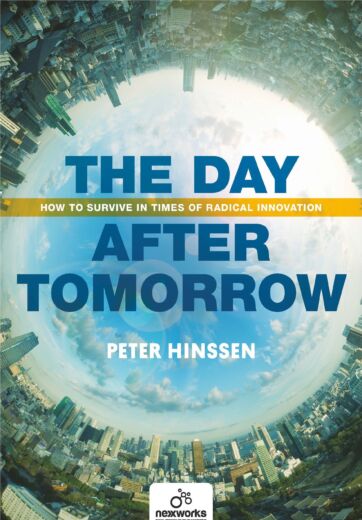Organizing for the Day After Tomorrow - Part 1
We spend most of our lives thinking about “Today.” There are a million reasons, every day again, why our attention is constantly drawn to this strange maelstrom of time that we have labelled “ Today.” Today is messy, today is chaotic, but today is very real. Today is the 112 emails you receive on Monday you did not even think you were going to get on the Friday evening before. Today is the “dark matter” of our universe that we don’t realize sucks up a lot of our energy and emotions.

We like to spend more time on “Tomorrow.” From time to time, we have to think about the “ budget of next year,” or the “organizational restructuring of the next fiscal quarter,” or the “targets of our sales forecasts.” We would like to spend more time in Tomorrow, because Tomorrow is important. Tomorrow is where our pay check will be coming from, where our customers will decide to be loyal or not, where our shareholders will decide if we are worth our salt. Tomorrow is a constant shadow hanging over us, always present, always urging. Be we don’t have enough time for Tomorrow.
And then there is the “Day After Tomorrow.” A mythical, almost magical place. The place of dreams, hopes, ideals. Where we can throw off the shackles of the past and focus on the blue oceans, the unspoiled dreaming of the future. But the “Day After Tomorrow” is far away. And just like New Year’s Resolutions where we would love to lose weight or spend more time with the family, the “Day After Tomorrow” ambitions often wither away very quickly. The Day After Tomorrow is often too far away for us to really worry about it, spend time in, and plan.
Until now that is … Until the “Day After Tomorrow” comes faster than ever before. And that seems to be happening, right now. Technology has accelerated the pace of change in society. Digital has gone from being nice to being nasty where, all of a sudden, we talk about disruption and radical change. Business models change overnight, and safe havens and markets are preparing for fundamental, disruptive changes. Companies feel like inhabitants of coastal towns preparing for an oncoming hurricane, nailing wooden planks to their windows, but knowing that the tornado could just knock their entire house down if it happens to stand in the path of the oncoming storm. The Day After Tomorrow comes faster than ever before in history. Scary. But it seems like we’re still doing our Today and Tomorrow business like it was the 20th century.
I love to ask companies how much time, budget, resources and talent they spend thinking about Today, Tomorrow and the Day After Tomorrow? As an individual, as a team, as an organization, or as a company. Most of them answer that the ideal proportion would be something like “70%, 20%, 10%.” Noble. And if that were the case, there would be no reason to write what I am writing now. They would be just fine if they would spend 10% of their resources on the Day After Tomorrow.

But rarely is that the case. Most people realize when they measure their real activities, that they spend more like a “93%, 7%, 0%” scenario. Despite the great intentions, those 112 emails, and Next Year’s Budget always seem to completely devour our “Day After Tomorrow” time.
Don’t let me tell you that Today is not important. It is. It is hugely important. Because it generates the current value of your activities. And Tomorrow is huge as well. Because that takes care of your future value.
But the incredibly small percentage of “Day After Tomorrow” ideas, concepts, notions or inspiration, can generate enormous amounts of long-term value for you, your company and your people. They are the ones that end up changing entire markets, industries and even the world. They are where the truly great ones – the giants of industry, those that provoke paradigm shifts – focus a lot of attention on. I’m talking about the Ubers of this world, and the Googles, with their moonshots. Or SpaceX’s Elon Musk who once claimed “I’d like to die on Mars, just not on impact.” How’s that for a long term vision?
So, my thesis is quite simple: If you don’t make sure that the Day After Tomorrow becomes a part of how you organize yourself as an individual, if you don’t embed the Day After Tomorrow in the DNA of your organization, then it’s pretty likely that you won’t even make it to the Day After Tomorrow.

The good news is you’re not alone. Everyone has the exact same problem. Everyone worries about this “Day After Tomorrow Deficit,” and we’re all scared that this Day After Tomorrow is coming faster than ever before, and closer than ever before.
I have observed hundreds of companies and organizations over the last 15 years on how they tackle this exact problem. I have examined all the different ways to organize for the Day After Tomorrow, and have been able to find patterns, structures and approaches that work. Like the International Airlines Group (IAG) with the unique approach of their Head of Digital Business Transformation, Glenn Morgan. Or the way CLAAS did it with its daring 365FarmNet. There is no simple solution, though. There is no silver bullet. Depending on where you are, who you are and what you want to do, I believe there is a right way to tackle the “Day After Tomorrow.” The real question is: have YOU found that model that allows you to adapt at the speed of your environment and innovate fearlessly, radically and permanently? If not, high time to start looking for it.
